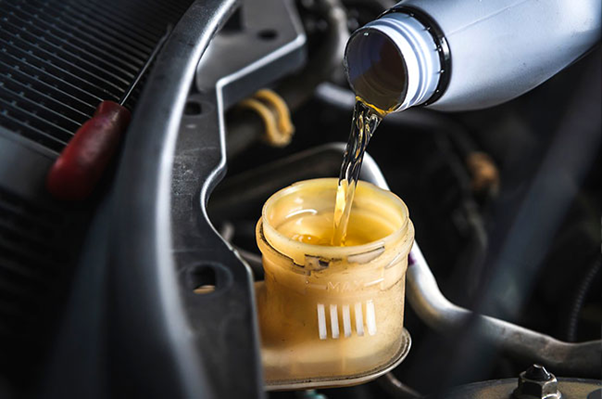When Do You Need a Brake Fluid Flush?

Multiple mechanisms go into the effort of making your car stop from moving.. And one of the most important things that keep your braking system smooth is the brake fluid.
What does the brake fluid do?
Most modern cars use a hydraulic braking system. In a hydraulic braking system, the brake fluid is a critical component.
It aids in transferring pressure from your brake pedal to the discs and drums, directly influencing your stopping power.
It also serves as a lubricant that protects the parts of the braking system from corrosion.
As it serves this crucial role, it is then important to keep your car’s brake fluid in check. One of the ways to do this is doing a brake fluid flush.
What is a brake fluid flush?
The process of flushing brake fluid by, you’ve guessed it, flushing the existing brake fluid. It is necessary in protecting the components of the braking system.
Brake fluid is hygroscopic. This means that when exposed to air, brake fluid absorbs moisture. And what does moisture do? It is an element for corrosion.
The more moisture the fluid absorbs, the more corrosive it gets. The more water in the fluid, the harder it is to achieve the optimal boiling point.
To avoid the rusting of the master cylinder, lines, proportioning valves, ABS system, and calipers which are all made of metals, brake fluid flushing is necessary.
What are the signs you need to flush your brake fluid?
Dark Brake Fluid
When in optimal condition, fresh brake fluid exhibits a light amber hue. However, as it degrades, its color darkens.
You can easily inspect the color of your brake fluid by checking the reservoir located under the engine hood.
Spongy Brake Pedal
You know that your braking system works properly if your car stops promptly and according to the applied pressure on the pedals.
If you notice that the brake pedal feels soft or spongy when pressed, it's a clear indication that your brake fluid is either low or has aged significantly.
If you need to depress the pedal all the way to the bottom when you need to brake, it’s time to check your brake fluid and flush it.
Brake Dashboard Warning Light
When the brake light on your vehicle's dashboard lights up, it's signaling that your brake fluid level has dropped below the recommended threshold.
This is a clear sign that it's time to have your brake system inspected.
But it’s also advisable to first check if the parking brake is engaged, as that can also trigger this warning light.
Unusual Noises and Odors
Unusual noises, such as squealing or grinding, when you engage the brakes can indicate issues related to low brake fluid or other underlying problems like worn brake pads or rotors.
Additionally, if you detect a burning smell after applying the brakes vigorously, it signals that your brake fluid is deterioratinn.
Consult Your Owner's Manual
Always consult your vehicle's owner's manual for guidance on maintenance schedules.
Most of the time, manufacturers recommend a brake fluid flush every two years or every 20,000 kilometers to ensure your braking system's optimal performance and your safety on the road.